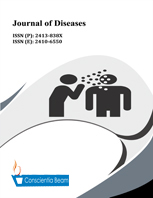Differential Responses to Cognitive Behavioral Therapy and Pharmacotherapy Versus Combined Therapy in Young Adolescents with Depression
DOI:
https://doi.org/10.18488/journal.99.2018.52.33.42Abstract
Background: Treatment of patients with major depression involves some problems and, an effective therapy, is still a debatable issue. The goal of this review was to provide a comprehensive survey on comparing three methods of Cognitive Behavioral Therapy, pharmacotherapy and combined therapy on treatment of depressed adolescents. Material and methods: this study was a randomized clinical trial with follow- up which was conducted in Isfahan city (2015). The statistical population included 330 middle school students (aged 13- 16 years) who had the criteria of depression disorder. Then 120 girls and boys were selected via cluster sampling. After that, they divided into 4 groups (3 experimental groups and 1 control group). 4 month after finishing the intervention, all groups were followed by the project. The research tool was the children's depression Inventory (CDI). Results: the results showed that all of the 3 experimental groups were significantly effective in the treatment of depression (p<00.1). In the post-test stage, the combination of pharmacotherapy and CBT, pharmacotherapy, CBT respectively were effective (p<00.0). But the findings illustrate that in the follow- up stage cognitive behavioral therapy had a long-term effect in compare to pharmacotherapy. Conclusion: at last the research results show significant efficacy of all three methods, with different priorities effect, at various stages, on improving the criteria for depression in adolescents.

